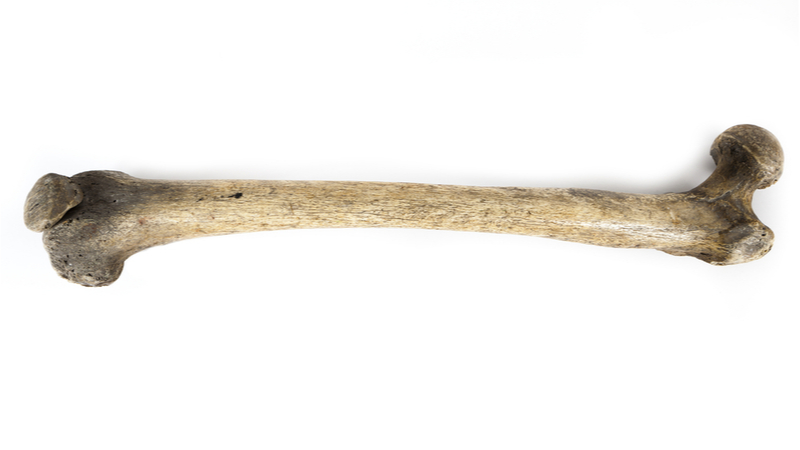A study published in the Journal of Clinical Investigation has reported that senescent cells are largely responsible for slow bone healing in aged animals and that senolytics, which remove these harmful cells, can speed bone regeneration.

Senescent Cells Slow Bone Healing
#1
Posted 02 May 2022 - 09:07 PM
The researchers begin their study by explaining how bone normally heals, gradually progressing from blood, soft tissue, hard tissue, and ultimately new bone. During this process, cells from internal and external sources provide different types of cartilage [1], and mesenchymal progenitor cells (MPCs), which give rise to bone cells, are recruited to the site. Previous research has found that age-related inflammation (inflammaging) is harmful to the recruitment of these cells in older organisms and that anti-inflammatory drugs are beneficial [2].
However, that research did not focus on one of the major sources of inflammaging: cellular senescence. This study aimed to fill this gap and determine the extent to which senescent cells impede bone healing; as it turned out, the effect was large.
A focus on TGF-ß1
The researchers note that transforming growth factor beta 1 (TGF-ß1) is a signaling component in bone, playing multiple, situationally dependent roles in its maintenance and regeneration [3]. In certain circumstances, TGF-ß1 can be beneficial; combined with IGF1, it has been shown to alleviate bone defects in old rats [4].
However, as part of the senescence-associated secretory phenotype (SASP), senescent cells constantly excrete TGF-ß1. This, the researchers hypothesized, interferes with the signaling process and discourages MPCs from proliferating, thus delaying the healing of bone fractures.
To test their hypothesis, the researchers first examined bone fractures in young (4 months) and old (20 months) mice and measured the levels of senescent cells. The results were striking; while aged animals, as expected, had more senescent cells than their youthful counterparts, the number of senescent cells increased far more a week after fracture in aged mice than young mice, as measured by the well-known senescence biomarkers p16 and p21. Senescent cells that expressed γ-H2AX, a marker of DNA damage, were also significantly overrepresented in the aged mice.
Senolytics significantly increased bone healing
As part of this experiment, the researchers gave young and old mice the well-known senolytic combination of dasatinib and quercetin, examining their senescence biomarkers 10 days after fracture and their bone structure 28 days after fracture.
As it has in previous experiments, the dasatinib and quercetin combination dramatically decreased the number of senescent cells, as measured by p16 and p21 biomarkers, in the aged animals, and it even significantly decreased them in the young animals as well.
Administration of this senolytic combination significantly improved the bone structure of aged animals in every single metric studied. Bone area, cartilage area, and the stiffness, toughness, and strength of bone were all significantly improved in older animals. The bones of younger animals appeared to be improved as well, but not to the level of statistical significance.
The researchers conducted further tests to make sure that it was the senescent cells that were causing the problems with bone healing. Driving cells to senescence through hydrogen peroxide harmed MPCs in cell culture, which was alleviated by the senolytic combination. Taking senescent cells from aged mice also harmed MPCs, which was similarly alleviated by senolytics.
Interestingly, directly affecting TGF-ß1 was found to be beneficial in both cell culture and in aged animals, although the effects of this approach, while significant, were not as stark as the effects of senolytics.
Conclusion
This research is extremely promising, but it should be noted that senolytic interventions that work in mice are not guaranteed to work in people. However, if this technique can be shown to work in human clinical trials, then senescent cell removal might become part of the standard of care when older people suffer from accidents that result in broken bones.
Literature
[1] Einhorn, T. A., & Gerstenfeld, L. C. (2015). Fracture healing: mechanisms and interventions. Nature Reviews Rheumatology, 11(1), 45-54.
[2] Josephson, A. M., Bradaschia-Correa, V., Lee, S., Leclerc, K., Patel, K. S., Lopez, E. M., … & Leucht, P. (2019). Age-related inflammation triggers skeletal stem/progenitor cell dysfunction. Proceedings of the National Academy of Sciences, 116(14), 6995-7004.
[3] Janssens, K., Ten Dijke, P., Janssens, S., & Van Hul, W. (2005). Transforming growth factor-ß1 to the bone. Endocrine reviews, 26(6), 743-774.
[4] Blumenfeld, I., Srouji, S., Lanir, Y., Laufer, D., & Livne, E. (2002). Enhancement of bone defect healing in old rats by TGF-ß and IGF-1. Experimental gerontology, 37(4), 553-565.
View the article at lifespan.io
#2
Posted 03 May 2022 - 06:17 AM
This, however, is the general issue as to whether the best solution is to ensure that Stem Cells don't become Senescent or to remove the senescent cells. I think prevention is better than cure. Cure is an option, but even then would it not be best to get senescent cells to be useful.










































